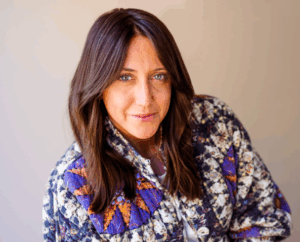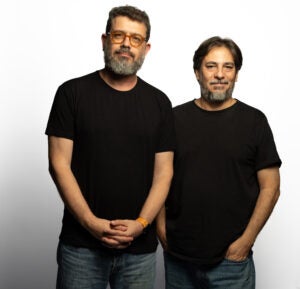With increasing fragmentation of news consumption and the crisis of the traditional media model, newsletters have returned to the center of journalism strategies.
Independent journalists and news outlets are using them to communicate the daily news, their latest investigations, exclusives, analysis and opinion. For many, they’re essential to forming and maintaining a brand.
But transforming a newsletter into a sustainable product requires more than just writing regularly and hoping for organic growth.
Experts say that audience growth requires strategy, consistency and a business mindset—three elements that many journalists still don't consider part of their editorial work.
Transitioning from a successful personal project to a sustainable business is the most common challenge faced by entrepreneurial journalists, said Liz Kelly Nelson, founder of Project C, an initiative focused on empowering independent journalists and creators to build sustainable media businesses.
“Most journalists start strong because they already have a personal network that believes in their work: friends, colleagues, former readers. The challenge comes in reaching beyond that circle,” Nelson told LatAm Journalism Review (LJR). “They know how to report but not always how to distribute content.
Another obstacle to growth is that many journalists don't consider what the business world calls product-market fit, as explained by Blair Hickman, a digital strategist and audience development specialist. She said that when a newsletter stagnates, it's important to evaluate whether the content truly suits the intended audience.
“If it does — and they've capped out their addressable audience — start thinking about new audiences to target and what content they'd need to make to do that,” Hickman told LJR. “Content is the number one growth driver. And perhaps doing more cross-promotion with editorially aligned creators.”

Blair Hickman helps news organizations and independent journalists build audience and revenue strategies. (Photo: Courtesy)
Hickman also warns against focusing too much on technical tactics from the outset of a newsletter's creation. Since platforms change their algorithms every six months, she believes this shouldn't be a major concern until the newsletter is larger.
“Posting time and choosing platforms will be important, of course. But foundationally you need to understand who you're speaking to, and how they move from being aware of you to being a superfan,” she said. “Just focus on creating the best content you can for your audience.”
Nelson and Hickman are instructors for an upcoming Knight Center course on how to professionalize newsletter revenue operations. The paid course, "Revenue 201: A Hands-On Course to Turn Your Newsletter into a Thriving Business," includes strategies for growing subscriptions and sponsorships, as well as practical tools such as a media kit and ready-to-use holiday campaigns. Offered in English, it starts on Nov. 3 and registration is now open.
In practical terms, Nelson says the most common barriers are identifying who the newsletter's target audience really is and understanding what they care about and where they spend their time; balancing content creation with marketing; and creating systems for growth, such as referral programs, partnerships, and consistent calls to action.
“Many still feel self-promotion is uncomfortable or ‘un-journalistic,’” she said. “Growth requires intentional audience strategy– thinking not just about what’s valuable to say, but who needs to hear it and how they’ll find it.”
Hickman said thinking like a founder is one of the mindset shifts journalists need to adopt to help ensure the long-term sustainability of a newsletter. She also emphasizes the importance of knowing how to handle the adversities that will be encountered along the way.
“You have to take action quickly, doing things that are uncomfortable, and learning what the market will pay,” she said. “LinkedIn only shows you shiny success stories. Being a solopreneur is draining and involves a lot of failure. Reframing failure as a success, because it means you tried, really helps.”

Project C co-founder and newsletter strategist Liz Kelly Nelson argues that growth requires intentional audience strategy. Photo: Courtesy
Regarding financial viability, Nelson said it's important to start by defining your value to the community, not just the topics you'll cover in your newsletter. She also recommended a mix of funding models, such as reader support (through subscriptions or paid plans), sponsorships, events, consulting or collaborations with NGOs and brands aligned with your values.
“What gap are you filling that no one else does? Then build slow, diversified revenue around that mission. Build partnerships early – especially with local organizations or other independent media,” she said. “And most important: protect your independence by owning your list and your brand identity. The creator-journalist path isn’t about going it alone. It’s about building a small, sustainable ecosystem around your reporting.”
Hickman emphasized that finding product-market fit is essential.
“Listen to what content your audience loves most, to the words they use to describe your work, and lean into that,” she said. “And keep an open mind about who that audience might actually be. Those are the people who will pay. And reader revenue is a lot easier to achieve, often, than sponsorship, which can often require immense scale.”
Launched in 2016, Brazil’s Meio was born with precisely these tenets: to solve a news consumption problem and find an efficient distribution outlet. What began as a daily newsletter has now also transformed into a platform with a YouTube channel, podcast and streaming service for subscribers.

Pedro Doria and Vitor Conceição launched Brazil's Meio in 2016 (Picture: Courtesy)
"You have to adapt your strategies to the current state of the internet, and the internet is truly a very fluid thing," Pedro Doria, one of Meio's founders, told LJR.
The initial strategy was to study the audience's new digital habits. He said that at the time, advertising for print newspapers was declining as people lost the habit of consuming print newspapers and magazines. He and his partner, entrepreneur Vitor Conceição, began to think about what kind of journalism-related business they could create and opted to test a minimum viable product.
"Our logic is always to look at the digital habits people have already created, consolidated, and how we can integrate journalism into that moment," Doria said. "At the time, the logic was: what can we do really cheaply? And a newsletter becomes part of people's habits."
For the first two years, Conceição said Meio focused exclusively on building an audience before considering monetization. Once they reached their target audience, their first move was to pursue advertising, but they soon realized that wouldn't be enough and turned to subscriptions as well.
"Advertising is a market that fluctuates greatly. You'll have a moment when sales are good, and then months without sales. And then we had a long discussion, which was very much about purpose," Conceição told LJR. "We've long believed that one of the problems the world is facing is that people lack information; they've lost the habit of informing themselves. A democracy doesn't function without a well-informed readership. If all quality journalism is behind a paywall, how will people get informed?"
The solution was to maintain the free daily newsletter and create additional content for paid subscribers: a special edition on Saturdays, priority access to the daily newsletter, and, at the time, access to internal news monitoring tools.
Today, Meio operates on a three-pronged strategy. The newsletter reinforces the brand, YouTube acts as a funnel, attracting a mass audience seeking video journalism, and streaming serves to convert the volume audience into subscribers with premium content.
"The newsletter gives us prestige. Through the newsletter, we're read by a well informed and influential: executives from major companies, politicians, economists, journalists and advertisers," Doria explained. "If you ask me in five years how Meio will work, it will be different. We'll be 10 years old next year, and we've already had about three models. And that's all good."